
Native Americans killed by police (L to R) from top: Marcus Lee, Lance McIntire, Daniel Covarrubias, Raymond Eacret, Jessie Lee Rose, Jacqueline Salyers, Mah-hi-vist Goodblanket, Richard Estrada, Jeanetta Riley, Larry Kobuk, Jamie Lee Brave Heart, Loreal Tsingine, Corey Kanosh, Allen Locke, Sarah Lee Circle Bear
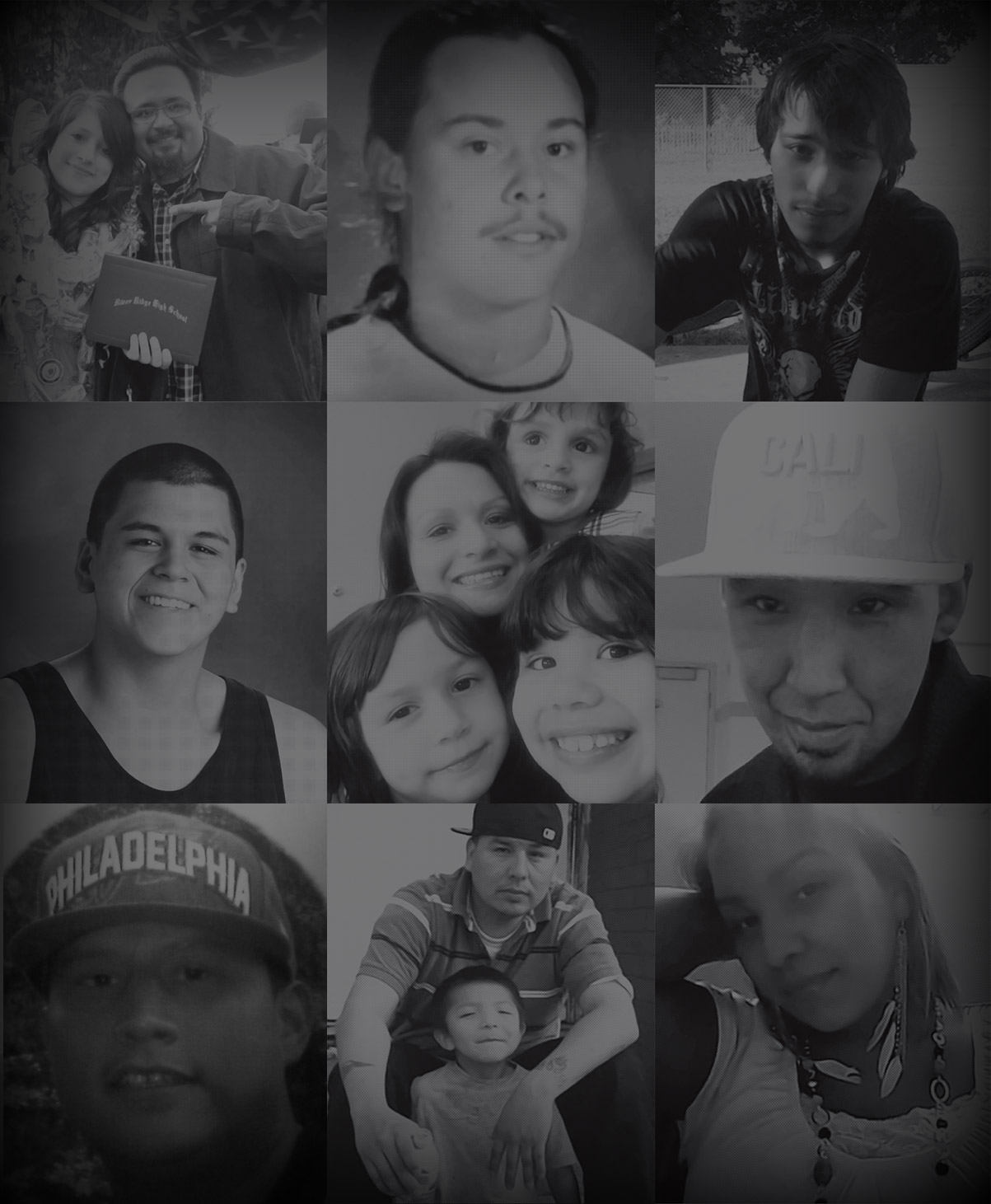
The Police Killings No One Is Talking About
Native Americans are being killed at a higher rate than any other group—but these deaths are rarely covered in the media. Now, Native groups are organizing for justice in a growing Native Lives Matter movement.
Native Americans killed by police (L to R) from top: Marcus Lee, Lance McIntire, Daniel Covarrubias, Raymond Eacret, Jessie Lee Rose, Jacqueline Salyers, Mah-hi-vist Goodblanket, Richard Estrada, Jeanetta Riley, Larry Kobuk, Jamie Lee Brave Heart, Loreal Tsingine, Corey Kanosh, Allen Locke, Sarah Lee Circle Bear
OCTOBER ISSUE | October 17, 2016
Suquamish tribe descendant Jeanetta Riley, a 34-year-old mother of four, lay facedown on a Sandpoint, Idaho, street. One minute earlier, three police officers had arrived, summoned by staff at a nearby hospital. Her husband had sought help there because Riley—homeless, pregnant and with a history of mental illness—was threatening suicide. Riley had a knife in her right hand and was sitting in the couple’s parked van.
Wearing body armor and armed with an assault rifle and Glock pistols, the officers quickly closed in on Riley—one moving down the sidewalk toward the van, the other two crossing the roadway. They shouted instructions at her—to walk toward them, show them her hands. Cursing them, she refused.
“Drop the knife!” they yelled, advancing, then opened fire.
They pumped two shots into her chest and another into her back as she fell to the pavement. Fifteen seconds had elapsed from the time they exited their vehicles.
That July evening in 2014, Riley became another Native American killed by police. Patchy government data collection makes it hard to know the complete tally. The Washington Post and the Guardian (U.K.) have both developed databases to fill in the gaps, but even these sometimes misidentify or omit Native victims.
To get a clearer picture, Mike Males, senior researcher at the Center on Juvenile and Criminal Justice, looked at data the Centers for Disease Control and Prevention (CDC) collected from medical examiners in 47 states between 1999 and 2011. When compared to their percentage of the U.S. population, Natives were more likely to be killed by police than any other group, including African Americans. By age, Natives 20-24, 25-34 and 35–44 were three of the five groups most likely to be killed by police. (The other two groups were African Americans 20-24 and 25-34.) Males’ analysis of CDC data from 1999 to 2014 shows that Native Americans are 3.1 times more likely to be killed by police than white Americans.
Yet these killings of Native people go almost entirely unreported by mainstream U.S. media. In a paper presented in April at a Western Social Science Association meeting, Claremont Graduate University researchers Roger Chin, Jean Schroedel and Lily Rowen reviewed articles about deaths-by-cop published between May 1, 2014, and October 31, 2015, in the top 10 U.S. newspapers by circulation: the Wall Street Journal, New York Times, USA Today, Los Angeles Times, New York Daily News, New York Post, Chicago Sun-Times, Denver Post, Washington Post and Chicago Tribune.
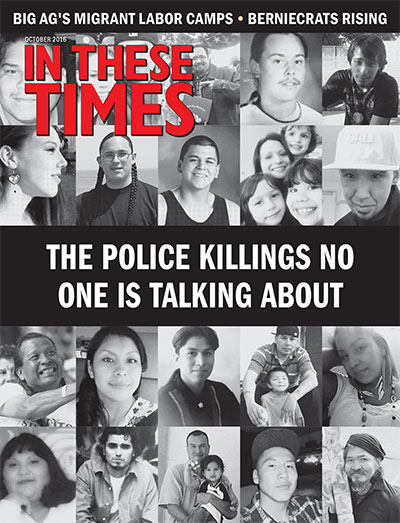
From the October 2016 Issue | purchase a copy
This reporting was made possible by a grant from the Fund for Investigative Journalism and the Leonard C. Goodman Institute for Investigative Reporting.
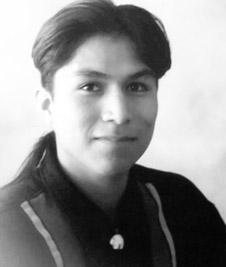
Corey Kanosh, an unarmed 35-year-old Paiute man, died in the Utah desert on Oct. 15, 2012. Police, believing the car in which he was a passenger to be stolen, chased it to a stop. After Corey got out of the car, police shot him and left him overnight. In the morning, he was pronounced dead.

Pregnant, homeless and threatening suicide, 34-year-old Suquamish tribe descendent Jeanetta Riley was shot and killed by Sandpoint, Idaho police on July 8, 2014, seconds after they exited their vehicles. Riley was holding a knife, and her shooting was ruled justified.

On Dec. 30, 2014, just one day after attending a Native Lives Matter protest, Allen Locke was shot and killed by a police officer in his Rapid City, S.D., home. A police investigation found the shooting justified because the 30-year-old Lakota man was holding a knife.
Of the 29 Native Americans killed by police during that time, only one received sustained coverage—Paul Castaway, a Rosebud Sioux man shot dead in Denver while threatening suicide. The Denver Post ran six articles, totaling 2,577 words. The killing of Suquamish tribal member Daniel Covarrubias, shot when he reached for his cell phone, received a total of 515 words in the Washington Post and the New York Times (which misidentified him as Latino). The other 27 deaths received no coverage.
Compare this media blackout with the coverage of the next-most-likely group to be killed by police. The researchers found that the 10 papers devoted hundreds of articles to the 413 African Americans killed by police in that period, as well as to Black Lives Matter (BLM) protests and police violence more broadly. That’s largely a testament to the power of the BLM movement, which exploded after the Aug. 9, 2014 killing of Michael Brown. When Minneapolis police killed both White Earth Ojibwe tribal member Philip Quinn, 30, and African-American Jamar Clark, 24, during the fall of 2015, Clark’s story was well-reported, while Quinn’s passing, like those of almost all other Native victims, was barely noted.
Nor did major media report on a spate of Native jailhouse deaths in 2015. The statistics on “death by legal intervention”—a term used by the CDC to describe fatalities at the hands of police—include those that occur in custody prior to sentencing. Whether the deaths are due to police action or neglect, the department is considered accountable. “When people are in custody, law enforcement has control of them and a responsibility for their welfare,” Males explains.
A report commissioned by Alaska’s Gov. Bill Walker found that Joseph Murphy, an Alaska Native veteran of the Iraq War, died of a heart attack in a holding cell in Juneau in August 2015, as jail staff yelled “fuck you” and “I don’t care” in response to his pleas. According to the report, Larry Kobuk, identified in news articles as a 33-year-old Alaska Native, who had a heart condition known to his jailers, died in January 2015 while being held face down by four officers. Sarah Lee Circle Bear, a 24-year-old Sioux mother of two jailed in South Dakota, died after reportedly complaining of pain and being refused medical care. (At the Democratic National Convention, Sandra Bland’s mother, Geneva Reed-Veal, who has become a vocal activist in the movement for black lives, pointed out that Circle Bear’s death occurred during the same month her daughter died in police custody—July 2015.)
The list of 2015 deaths goes on: 53-year-old Choctaw medicine man Rexdale Henry, in a jail cell in Mississippi; Alaska Native Gilbert Joseph, 57, in Alaska; Yurok tribal member Raymond Eacret, 34, in California. On the Cheyenne River Sioux Tribe’s reservation in South Dakota, an angry crowd marched on police headquarters after tribal member Phillip High Bear’s mother alleged her 33-year-old son was beaten to death there. Protestors sang, drummed and shouted taunting references to the 1890 shooting death of Lakota spiritual leader Sitting Bull at the hands of Native police officers.
Yet even this story received no coverage in the 10 largest papers. The Claremont researchers stress that they are not criticizing the important attention paid to the movement for black lives, but they note that a larger narrative is at play: Racial issues in the United States tend to be framed as black and white, while other groups are ignored.
But Native Americans’ experiences of violence and discrimination in the United States often parallel those of African Americans. Federal investigations have found that on the borders of reservations, Native Americans are treated as second-class citizens by police and public agencies in ways that echo the experience of black Americans in towns like Ferguson, Mo.
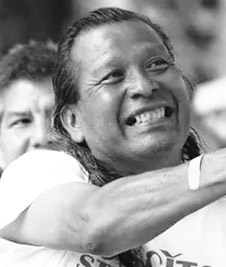
Rexdale Henry, a 53-year-old Choctaw medicine man, was arrested in Philadelphia, Miss., for a minor traffic violation and outstanding tickets. On July 14, 2015, he was found dead in his jail cell. Henry’s cellmate was charged with his murder, but the details of the death are unclear.
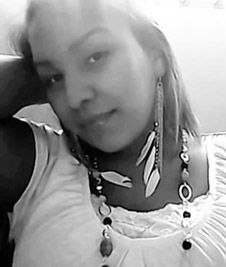
After telling jailers that she was in excruciating pain, Sarah Lee Circle Bear, 24, was found dead in her Aberdeen, S.D., holding cell on July 5, 2015. Police later said the Lakota woman died from a meth overdose, but her family notes that she had been in police custody for two days before she died.
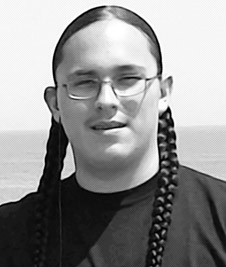
Mah-hi-vist Goodblanket, 18, a member of the Cheyenne and Arapaho tribes, was Tasered twice and shot seven times in his Clinton, Okla., home by police on Dec. 21, 2013. His mother had called the police to request help keeping her son safe during a mental health episode.
Over the past 40 years, the U.S. Commission on Civil Rights (USCCR), an independent government agency, has held numerous hearings on discrimination in border towns surrounding reservations: in New Mexico, near the Navajo reservation; in South Dakota, near the Sioux reservations; and, just this August, in Billings, Mont., near the Crow and Northern Cheyenne reservations.
Incidents aired even in recent hearings sound like tales from the pre-civil-rights Deep South. They ranged from denial of service in public places to police brutality to the failure to investigate murders. In Northern Plains states, USCCR members personally observed staff in restaurants and stores hassling or refusing to serve Natives. In South Dakota, the commission heard testimony about a police department that found reasons to fine Natives hundreds of dollars, then “allowed” them to work off the debt on a ranch. USCCR Rocky Mountain director Malee Craft described the situation as “slave labor.”
This is the context for Native deaths at the hands of police.
The high rate of these killings is also a result of the comparative dearth of mental healthcare services for Native Americans, says Bonnie Duran, an Opelousas/Coushatta tribe descendent and an associate professor in the University of Washington School of Social Work. People threatening suicide and experiencing other mental health crises made up one-quarter of all those killed by cops in the first half of 2016, according to data collected by the Washington Post; they made up nearly half of the Native deaths examined by the Claremont researchers.
Distraught people in these situations—such as Riley or Castaway—can be particularly vulnerable. Commands from multiple officers in a quickly developing situation can be very difficult to parse, even for someone who isn’t in crisis, says Jim Trainum, a former Washington, D.C., homicide detective.
“Attending to conflicting signals from multiple sources results in a huge cognitive demand,” says Melissa Russano, a psychologist and criminal justice professor at Roger Williams University. “Split-second responses are required of the individual. You have to assess if and to what extent there is a threat, and that may create a certain level of panic.”
As funding for mental healthcare continues to plummet, police are increasingly the first responders to mental health crises that they are untrained for and ill-equipped to handle.
In Native communities, the lack of mental healthcare services is particularly acute, according to an analysis of CDC data by the Suicide Prevention Resource Center (SPRC), and there’s a critical shortage of Native professionals who understand cultural factors affecting patients. Data from the National Congress of American Indians illustrates this: In 2013, Indian Health Service per-capita expenditures were $2,849, compared to $7,717 per person for healthcare spending nationally. One indication of the situation’s severity is the suicide rate for Natives, which in 2010 was 16.93 per 100,000, compared with 12.08 for the population as a whole, according to SPRC.
Mental health resources for Native Americans are even scarcer off-reservation, in the so-called urban-Indian communities, where about half of the Native population lives. There, clinics are funded at a lower rate, says Duran. This is also where the largest share of police killings occur: 79 percent, according to Chin.
Some police departments have responded by training officers in crisis intervention, which teaches them to slow down and find alternatives to the immediate application of lethal force, or by pairing officers with mental health professionals on calls that clearly involve such issues. Research is not yet conclusive about what works best, says Duran, but she stresses that the best solution is to address the problem at the root: Fund social services.
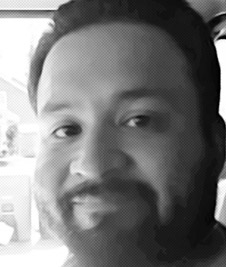
On April 21, 2015, Lakewood, Wash., police shot and killed 37-year-old Daniel Covarrubias, when they mistook his cell phone for a gun. The shooting of the Suquamish man, a descendant of Chief Seattle, was later ruled justified. His family is calling for an independent investigation.

When Christina Tahhahwah, a Comanche woman with bipolar disorder, refused to leave her grandparents’ house in Lawton, Okla., police took her to jail—instead of to the hospital, as her family wished. The next day, Nov. 14, 2014, she was found handcuffed to her cell door and unresponsive.

On March 27 in Winslow, Ariz., a police officer shot and killed Loreal Tsingine, a 27-year-old Navajo woman who had been holding medical scissors. Fellow police have said that in training, the officer was unable to control his emotions and was too quick to use his weapon.
Native Lives Matter
The grassroots Native Lives Matter (NLM) movement is attempting to bring attention to the deaths, and to the larger social and economic oppression of Native Americans. Started in late 2014, the concept was inspired by Black Lives Matter, says one of the founders, Chase Iron Eyes, a Lakota attorney and Democratic candidate for Congress from North Dakota.
Neighboring South Dakota had been scrutinized by USCCR in a 2000 report, “Native Americans in South Dakota: An Erosion of Confidence in the Justice System.” In the hearings that led up to the report, commissioners heard testimony about racial profiling during traffic stops, drunk drivers receiving light or suspended sentences for killing Natives, and, just as concerning to Natives, the white community’s denial of the existence of racism toward Native people.
On Dec. 19, 2014, Iron Eyes and other Natives marched in Rapid City, S.D., to draw attention to police brutality against Natives. The next day, Rapid City police fatally shot a Native man, Allen Locke, who had attended the protest.
From the beginning, Iron Eyes says, NLM was intended to encompass numerous issues affecting Natives, from child welfare to incarceration disparities. The Native Lives Matter Facebook page and Twitter feed show the idea has proliferated across Indian country, with grassroots groups adopting the slogan as an umbrella term to advocate for environmental and social causes. “We don’t own it; everyone has a right to it,” says Iron Eyes.
Enter the Puyallup tribe (pronounced p-YAH-lup), an economically powerful, 4,000-member Northwest Indian nation with a successful casino, numerous tribal and individual fishing enterprises, and a real-estate portfolio of commercial and industrial properties. The tribe’s reservation intersects the city of Tacoma, Wash., and members report the same kind of police harassment documented by USCCR in other border communities, such as being pulled over for “driving while Indian.”
Now, the Puyallup are seeking to ensure that police are held accountable for their actions, no matter who the victim—Native or non-Native.
The Puyallup were catapulted into the issue of police violence on January 28. Shortly before midnight, Tacoma police officers approached a parked car. A convicted felon, Kenneth Wright, 36, who was wanted on drugs and weapons charges, was in the passenger seat; his pregnant girlfriend, 32-year-old tribal member Jacqueline Salyers, was the driver. Minutes later, one of the officers had shot Salyers in the head, and Wright had escaped into the night.
Almost immediately, relatives began to question the police account of the incident. They are now in the process of conducting their own investigation. There is no video record: Tacoma officers used no body or dash cams at the time, a police surveillance camera overlooking the street allegedly malfunctioned during the event, and police apparently destroyed three security cameras on a nearby house during their investigation.
The city of Tacoma, however, freely provided In These Times with hundreds of pages of witness statements, detectives’ reports, 911 calls, logs of police-vehicle movements, scene photographs and more, assembled for its internal investigation.
According to the official account, Scott Campbell, the officer who shot Salyers, said that while on patrol, he recognized Wright and, behind the wheel, saw “a Native American female that appeared to be around 30 years of age.” His partner, Aaron Joseph, stopped their cruiser across the street.
The two officers challenged Salyers and Wright to put their hands up. According to Campbell, Salyers then accelerated the car toward him; he says he shot at her to save his life.
Of the eight shots discharged, four hit Salyers. No shots hit Wright, who, when apprehended weeks later, told investigators he had ducked down.
After the gunfire, the officers took cover. Campbell told police investigators that he hid behind the bed of a pickup truck with his pistol pointed toward Salyers’ vehicle. From this spot, he observed Wright “climbing around in the front of the vehicle [and] attempting to retrieve something from the rear of the vehicle,” screaming “you fucking killed her” and other accusations, clambering over the “apparently shot female,” exiting the car on the driver’s side and running away, armed with a rifle.
The police account raises a number of questions. Why did Campbell believe shooting the driver would stop a car that was in gear and underway? Why would an officer duck, pistol in hand, and watch while a dangerous wanted criminal laboriously armed himself and escaped into a residential neighborhood? In what would undoubtedly be a dangerous and quickly changing situation, why didn’t the officers call for back-up or first look for a way to get Salyers, a bystander, out of the car?
About half an hour later, two officers removed Salyers from her vehicle—dragged her, according to a witness from the neighborhood—and put her in a patrol car. According to Tacoma Police Department spokesperson Loretta Cool, “The suspect, in the area with a rifle, would dictate moving to a safer location to administer medical aid.” Cool declined to comment further, citing the possibility of a lawsuit.
Once in the new location, Salyers was dragged back out of the patrol car and onto the pavement, where Campbell performed chest compressions. Medics arrived and Salyers was pronounced dead. At some point, her right arm was broken, but not by a bullet; her family discovered this while preparing her for burial.
Based on the Tacoma Police Department’s internal investigation and the medical examiner’s report, the county prosecutor found the shooting justified. A review board later affirmed these findings, announcing on August 16 that “Campbell’s use of deadly force was reasonable and within department policy.” Salyers’ family strenuously objects to that conclusion.
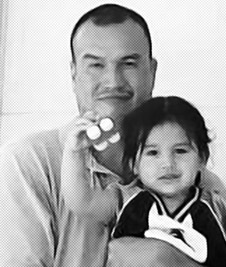
Denver police officers claim that they shot 35-year-old Paul Castaway four times on July 12, 2015, because he had come “dangerously close” with a long knife. But a video shows the Rosebud Sioux man holding the knife only to his own neck. Family say he was having a schizophrenic episode and needed assistance, not violence.
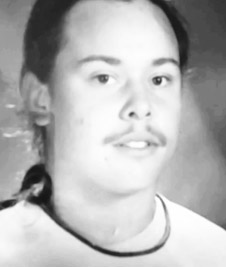
Raymond Eacret, a 34-year-old Yurok tribal member, died in a Humboldt County, Calif., jail on June 26, 2015. Officers say that he hanged himself with a makeshift noose, but Eacret’s mother says that her son’s body looked as if it had been brutally beaten first.
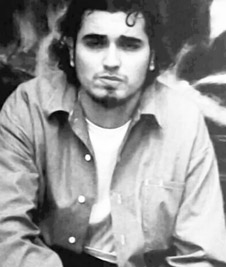
Philip Quinn’s family called St. Paul, Minn., police multiple times on Sept. 24, 2015, for help containing the 30-year-old, whom they said was psychotic and suicidal. Police shot and killed the White Earth Ojibwe man as he ran toward them with a screwdriver.
‘Everyone is welcome’
The killing horrified residents of the multi-ethnic Tacoma neighborhood. Gary Harrison, a 48-year-old African-American veteran, was awakened by the gunfire. The shooting happened right in front of his home. “I saw [Jackie’s] car and so many police, for blocks around,” he recalls. Two of his housemates told the others, “They shot Jackie.” He had known the young woman. “She always had a smile for you,” he says, eyes bright with tears.
At Salyers’ funeral, her mother, Lisa Earl, 53, called for justice—not only for her daughter, but for everyone impacted by excessive use of force by law enforcement. Her tribe took up the challenge under the banner “Justice for Jackie, Justice for All.”
Following her killing, Salyers’ relatives met weekly at the Puyallup Little Wild Wolves Youth/Community Center, where Earl works, to mourn and to plan a March 16 two-mile protest march from the tribal headquarters to Tacoma’s federal courthouse. Nearly 300 people turned out. Family and tribal members were joined by other Tacoma residents who had lost loved ones to police shootings and citizens involved with other issues, such as workers’ rights and the environment. In May, family members joined tribal council member Tim Reynon on a trip to Washington, D.C., to press the Department of Justice’s Office of Tribal Justice for an independent investigation of the shooting. At press time, no decision had been made whether to undertake one.
As time went by, others in the region—both Native and non-Native—who had lost friends and relatives to police killings began attending the family’s gatherings, which continue regularly. They recount their stories in a traditional Puyallup talking circle (during which participants express themselves in turn and without interruption), then share a meal. Each person is in a different phase of their grieving, says James Rideout, 45, Lisa Earl’s brother. “They are in such tender moments.”
On the evening of June 20, In These Times attended one of the meetings. As participants filtered into the community center, they hugged, exchanged bits of gossip and found places in a circle of chairs. They were Native, black, white and Latino, young and old, united by concern about friends, family and neighbors lost in encounters with the police. The scent of cooking crab—gathered by Rideout in the Puget Sound earlier that day—wafted over the gathering, as participants told stories of tragedy and survival.
Andre Taylor, 48, spoke about what he called the “execution” of his brother, Che Taylor, an African American shot to death at age 46 in Seattle earlier this year. Silvia Sabon, a 53-year-old Tlingit tribal member, described the death of a 23-year-old Latino family friend, Oscar Perez-Giron, whom she says was killed on a bus platform by police challenging his lack of a ticket. African-American mother Crystal Chaplin, 52, said that in May 2015, Olympia, Wash., police shot both of her sons, Andre Thompson, then 23, and Bryson Chaplin, then 21, in the back. Both survived, but Bryson was paralyzed.
“Everyone is welcome [at the meeting],” says Sabon. “It doesn’t matter what color you are. We are all going through the same thing.”
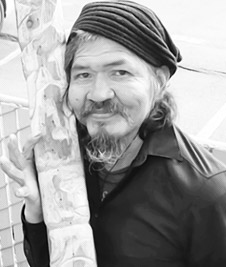
In a shooting that garnered national attention, John T. Williams, 50, was shot on Aug. 30, 2010 by a Seattle police officer who claimed—against witness testimony—that the Nuu-chah-nulth man had lunged at him with a knife. A proposed police reform bill in Washington state bears his name.
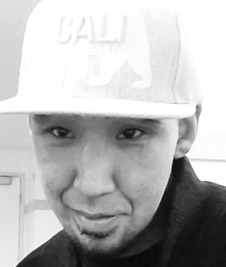
When jailed in Anchorage, Alaska, on Jan. 27, 2015, Larry Kobuk, 33, told the attending nurse he had a heart condition. Officers placed him face down in his jail cell and forcibly removed his clothes as he yelled that he couldn’t breathe. Within minutes, he was unresponsive; he never regained consciousness.
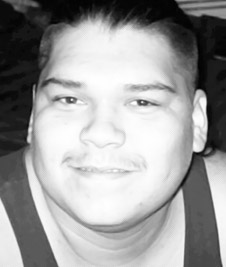
On Dec. 16, 2012, at a travel plaza 35 miles north of Las Vegas, tribal police from the Moapa Band of Paiutes Tasered and then shot to death Marcus Lee, a 28-year-old father of four. Lee, who was killed in front of one of his sons, was wanted on several warrants. The FBI cleared the officers involved in the shooting.
Not alone
Though the family and tribal community have acknowledged the Native Lives Matter movement, the thrust of the Puyallup’s efforts has been ecumenical. This approach makes sense culturally to the Puyallup. Their name for themselves in their language connotes “generous and welcoming behavior to all people who enter our lands.”
“When the police killings happened to people who didn’t have a tribe to back them up, they were alone, on their own out there,” says Rideout. “When our tribe took a position on this issue, we realized we had an opportunity to take care of them all, to bring them along with us.”
In addition, says tribal council member Reynon, a tribe can be effective in a ways an individual advocate or advocacy group cannot. “We have a trust relationship with the federal government, so we are a sovereign nation with the full weight of the United States behind us. We also have the recognition and respect of local governments.”
The Puyallup tribe supports a Washington state ballot initiative that seeks greater police accountability for lethal use of force. The bill that the initiative would put before the legislature is named for John T. Williams. He is one of few Natives whose death-by-cop, in Seattle in 2010, received more coverage. Then 50, he was shot by an officer who first claimed Williams lunged at him with a knife, though eyewitnesses contradicted this. The shooting was termed unjustified, but the officer never faced criminal penalties.
“With the ballot initiative, we want to build a model for this issue that can be replicated around the nation,” says Chester Earl, 42, Salyers’ cousin. “On January 28, our family was made part of a circle of families throughout the nation who are living with this issue.”
Puyallups have joined individuals and groups statewide, like the NAACP, that are collecting signatures; 250,000 are needed by the end of 2016 to put the measure before the legislature.
When Seattle Mayor Ed Murray announced that he backed the bill, a Seattle Police Department representative said, “We support the mayor’s position on the initiative, so by default, we support it.” It appears to be the only police department in the state to issue a positive response to the potential change.
In another development, state legislative leaders have appointed Reynon to a new Joint Legislative Task Force on Deadly Force and Community Policing, a committee drawn from community groups as well as law enforcement. The bill establishing the task force acknowledges the danger police are often placed in as they protect the community, but it also seeks ways to reduce violent interactions between law enforcement and the public.
“We have to find a solution that works for everyone,” says Reynon. “It will mean change, and change is never easy.”
For Salyers’ family, it’s been a painful process. “We never asked to be a part of this,” Rideout says. “We always want to stress the good narratives, our children succeeding. But now that we are involved, we must ensure that nothing like this ever happens again.”
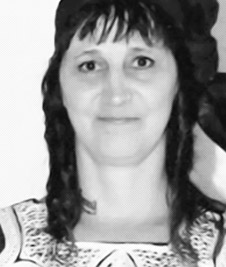
Wichita, Kansas police officers shot Karen Day-Jackson, 45, a mother of three and grandmother of 11, on July 10, 2012. Police say the Eastern Shawnee woman came at them with a knife, stabbing herself in the chest and yelling “shoot me.”

Puyallup tribal member Jacqueline Salyers, 32, was at the wheel of a parked car when police spotted Kenneth Wright, 36, who had multiple outstanding warrants, in the passenger seat. Police shot and killed the pregnant Salyers while Wright escaped. The shooting was ruled “justified” based on an officer's testimony that Salyers had threatened his life with the car; family members strenuously dispute that account.
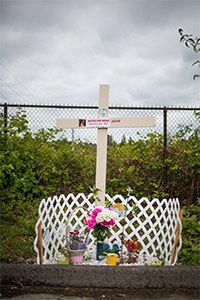
At the spot where Jacqueline Salyers’ body lay on the pavement, Puyallup tribal members have held candlelight vigils.
Justice for Jackie … and Jennie
Tribal involvement means the possibility of real and lasting change to Ramona Bennett, a Puyallup elder in her late seventies. “People and movements may fade, but a tribe doesn’t go away,” says Bennett, a former tribal chairwoman and long-time activist who was gassed, clubbed, shot at and arrested during 1970s “fish-ins” to demand recognition of treaty-guaranteed fishing rights.
The Puyallup have long been easy victims in Tacoma, Bennett says. Traditionally, they lived in communal longhouses, but late-19th-century presidential proclamations and Congressional actions broke up the reservation and forced tribal members to move to isolated cabins on separate plots. “Fishing and trapping were outlawed, so the men went out at night, making the cabins very dangerous,” says Bennett. “White men would come, kick the doors in, rape and murder the [women] and throw their bodies on the railroad tracks, where they’d be called ‘railroad accident deaths.’ … We discovered in our tribal enrollment office a stack of ‘railroad death’ documents from 1912 to 1917.’’ Among them was one that recorded the death of Bennett’s grandmother Jennie.
The Justice for Jackie, Justice for All effort will succeed, Bennett believes. “But I’m still out for justice for Jennie ... a girl who has been dead for 104 years.” 
“The Police Killings No One Is Talking About” is from the October issue of In These Times magazine. Purchase a copy here or subscribe to the magazine.
Stephanie Woodard a contributing writer to Rural America In These Times, is an award-winning journalist whose articles on American Indian rights and other topics have been published by many national publications and news sites.
This reporting was made possible by a grant from the Fund for Investigative Journalism and the Leonard C. Goodman Institute for Investigative Reporting.
Get more of what the mainstream media leaves out: Sign up for the free In These Times weekly newsletter:
